
Hewlett Packard Enterprise was a bit ahead of the curve when it announced in 2019 that by this year it would be offering its entire product portfolio as a service and that its GreenLake hybrid cloud platform would be the foundation of the effort.
Rivals over the past couple of years have followed suit, including Dell Technologies with its Apex initiative, Lenovo and TruScale and Cisco Systems with its Cisco+. HPE has been racing to keep ahead of the pack, keeping up a consistent drumbeat of adding new services to the fast-growing lineup, from storage and data analytics to HPC and networking (via its Aruba Networks business). It has been adding artificial intelligence, machine learning, containers and virtual machines into the mix and folded in some aspects of its Ezmeral software portfolio.
A year ago the vendor unveiled GreenLake Lighthouse to pull together software and cloud-native hardware to make it easier for enterprises to launch their hybrid cloud environment and services and Project Aurora to deliver zero-trust security functions to GreenLake’s cloud services.
All this come as organizations continue to adopt hybrid cloud strategies in an increasingly distributed IT environment to bring the agility, scalability and consumption-based payment models of the cloud into their datacenters.
“Where we’ve really pivoted over the last probably 12 to 18 months is the architecture of the platform, bringing every service within HPE onto a single platform,” HPE CTO Fidelma Russo said during a recent press briefing. “At the base of this platform architecture is the GreenLake cloud platform and you can think of that as your Amazon experience. When you go in, you have a single sign on, you have a single way to consume: you look at your subscriptions, you get your support and you can get all of those different pieces in GreenLake. Once you enter into GreenLake, you have this single experience, a single identity that you bring with you no matter whether you’re consuming compute, no matter whether you’re consuming storage, our MLOps offerings or our workload orchestration offerings.”
HPE this week is once again expanding its offerings within GreenLake, with a focus in such areas as networking, storage, HPC and compute operations management. With these latest moves, every business unit within HPE will now have cloud services offered on GreenLake and consumed via that single user experience, Russo said.
“Security and compliance are key [and] run through the platform and we provide security and compliance not just to the underlying GreenLake cloud platform, but also to the services that sit on top of it,” she said, noting the company’s advisory services, managed services and financial services. “You will start to see those get tighter and tighter integration into the platform as we move out over time. The cloud platform is a fundamental substrate on which all of our cloud services sit on.”
In the latest enhancement of the platform, a key part is bringing the bulk of the Aruba portfolio into its services lineup. Of the 12 new services being added – bringing the overall total to more than 50 – eight of them fall into the networking category. Since buying Aruba in 2015 for about $3 billion, the networking vendor has become key to the larger company’s efforts in such areas as infrastructure, the cloud and the edge.
In this case, HPE is bundling many of these services into GreenLake for Aruba Networking, making it easier for enterprises to deploy networking-as-a-service (NaaS) and ensuring both cost efficiency and an always-ready network.
It also means a significant boost to GreenLake’s numbers. According to Russo, bringing Aruba and its customers more deeply into the fold will increase GreenLake’s customer base from about 1,350 to more than 120,000 on the platform.
The company also noted other figures to show the health of GreenLake, including 136 percent year-over-year growth in orders in the first quarter, annual recurring revenue of $798 million in Q1, more than 900 partners and a 96 percent customer retention rate.
Flynn Maloy, vice president of marketing for GreenLake, said during the briefing that such accelerated growth gives HPE the opportunity to new services. Beyond networking, the vendor also introduced GreenLake for Block Storage, delivering block storage as a service and ensuring data availability via self-service provisioning for greater agility.
Also within the storage arena, HPE’s backup and recovery service is aimed at hybrid clouds, with protection of data for virtual machines, rapid recovery on premises and a cost-efficient approach to store long-term backups in public cloud environments. The vendor also is adding immutable data copies on premises or on Amazon Web Services to help enterprise protect against and recovery from ransomware attacks.
The new storage offerings add to what HPE rolled out a year ago when it first introduced its storage-as-a-service offering, which included the Data Services Console and Cloud Data, according to Sandeep Singh, vice president of storage marketing at HPE.
“What we are introducing with HPE GreenLake for Block Storage is this whole notion of self-service agility for customers where the line-of-business owners, the database owners, are able to provision and move faster,” Singh said. “Secondly, software customers want to adopt storage service offerings for their mission-critical environments with 100 percent availability guarantee. We’re making that available with the block storage offer and, overall, just across the industry relative to the other offerings being able to provide that self-service agility, combined with the mission-critical reliability, combined with the ability to essentially order rapidly, deploy rapidly and have a high-managed self-service agility and track.”
The expansion of the HPC capabilities in GreenLake is aimed at enabling organizations to better run compute- and data-intensive workloads like AI, machine learning and analytics. The enhancements include the addition of HPE’s Apollo 6500 Gen10 system, which uses Nvidia’s A100, A40 and A30 GPUs in increments of two, four, and eight accelerators. The service also includes Nvidia’s NVLink high-speed interconnect between GPUs to enable them to work in unison as a powerful single accelerator. HPE also is including Slingshot, the Ethernet-based fabric inherited when the company bought supercomputer maker Cray in 2019 for $1.4 billion.
HPE uses Slingshot in its Cray EX supercomputers – which also came on as part of the Cray deal – and its several upcoming exascale systems.
The introduction of HPE’s parallel file system storage will deliver improved throughput for a range of HPC and AI demands and multicloud connector APIs enable enterprises to programmably orchestrate HPC workloads in public clouds or among other compute resources in GreenLake. HPE also is lowering the entry point for companies looking to leverage GreenLake for HPC by offering a smaller configuration of 10 nodes to test workloads and then scale as needed.
HPE’s first HPC GreenLake offering was based on the vendor’s smaller, dense Apollo 2000 platform. The new HPC offerings not only include Nvidia’s latest GPUs but eventually also will include the option of AMD’s MI100 accelerators. There also are more workloads supported, including fluid dynamics, genomics, biosciences, and oil and gas.

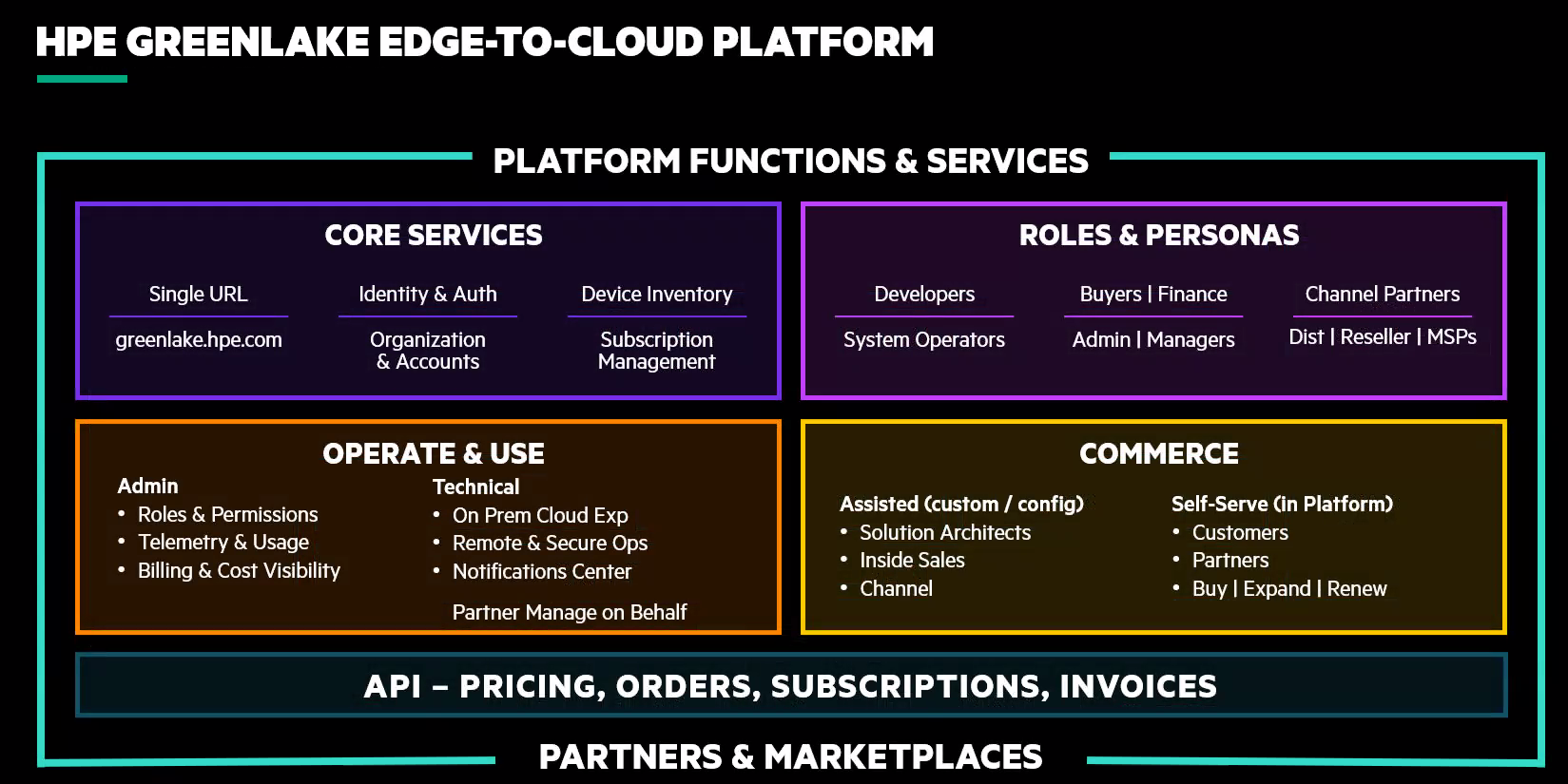
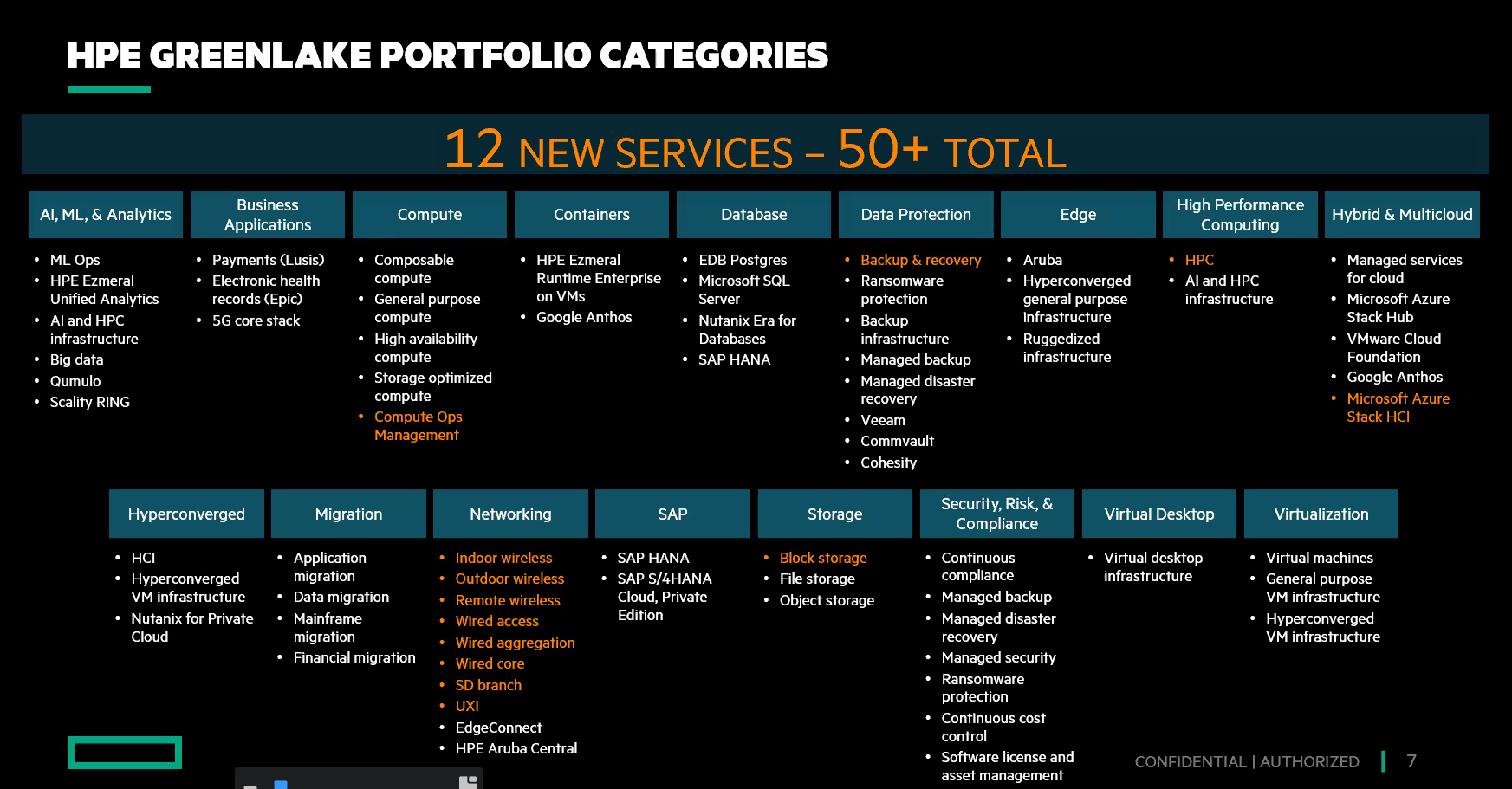
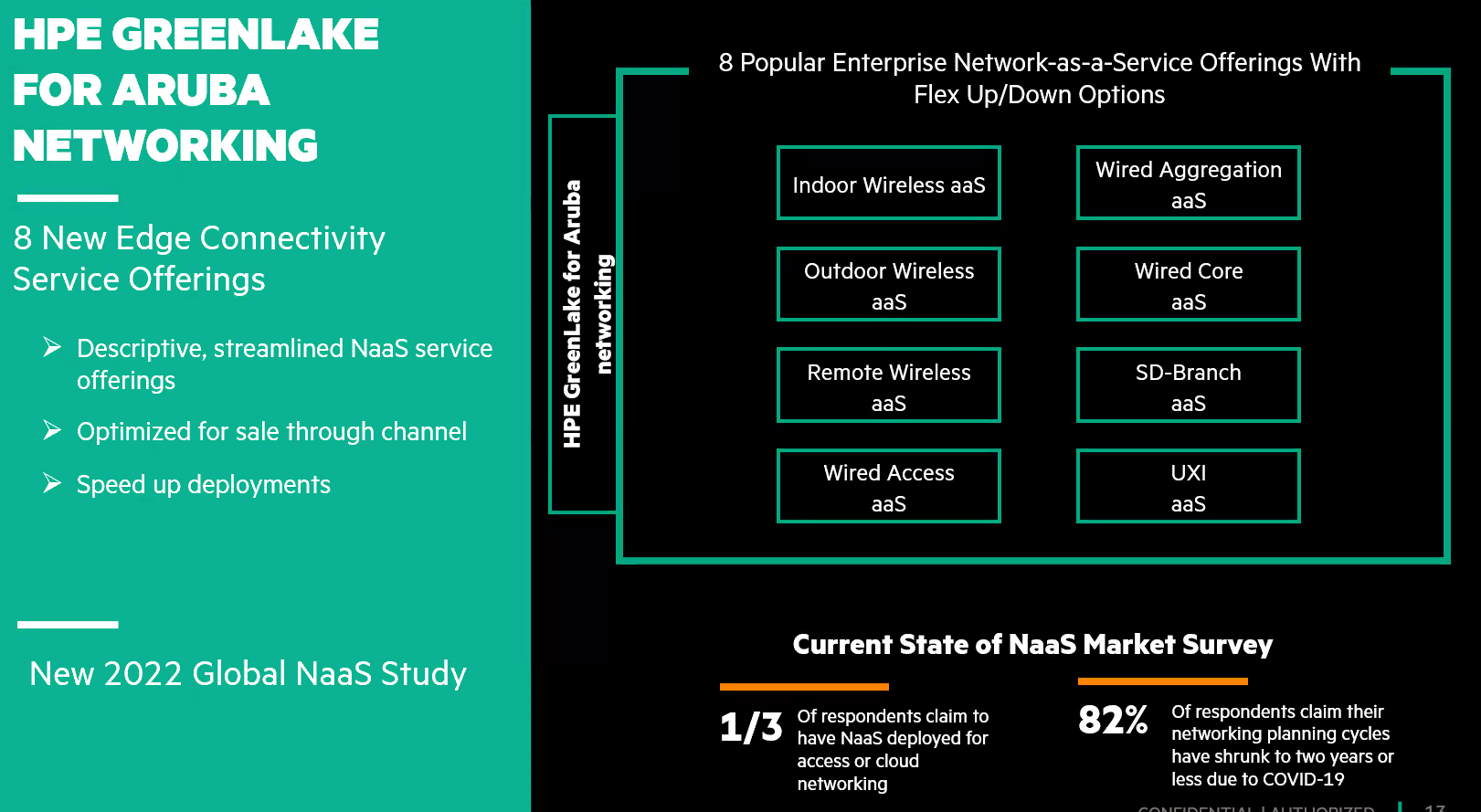
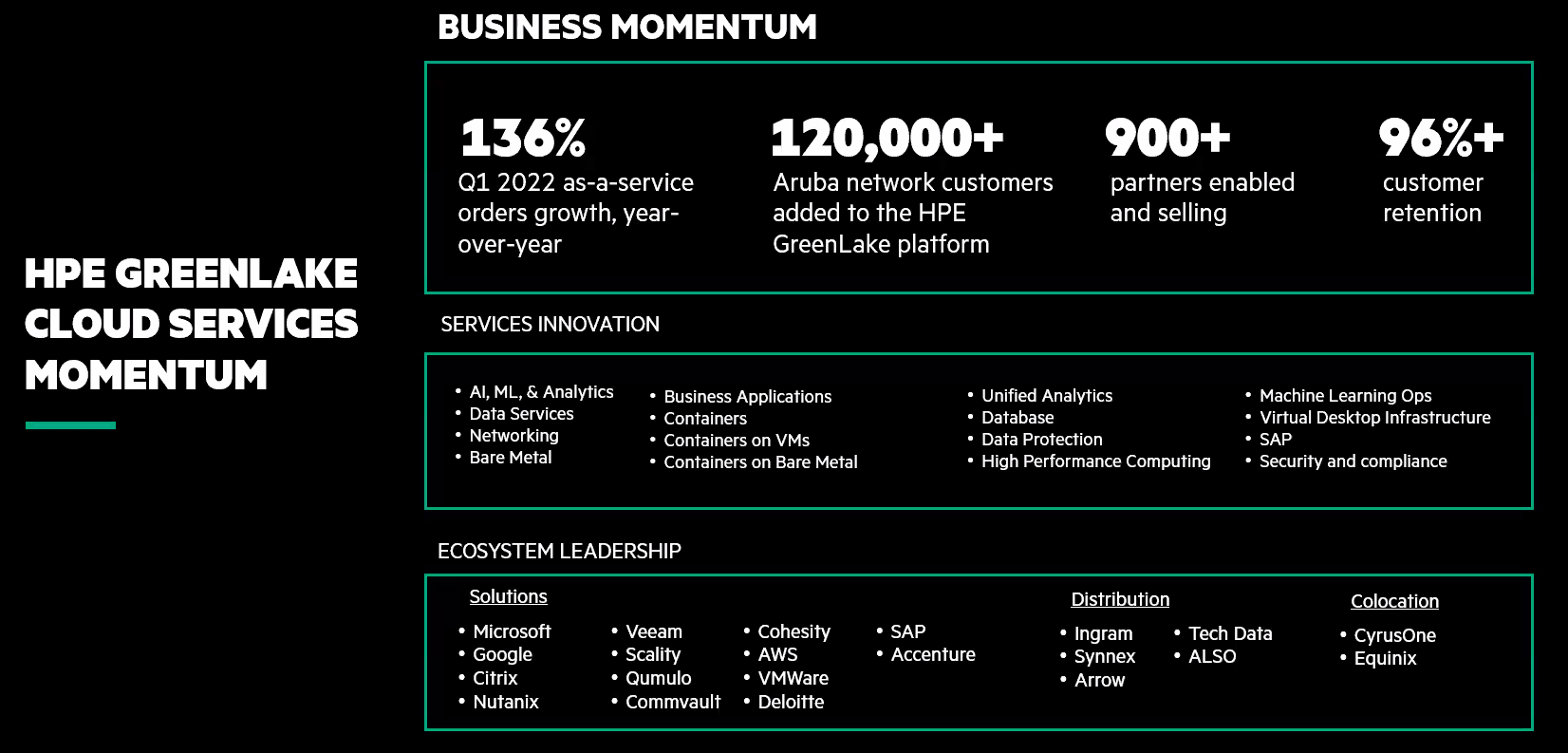
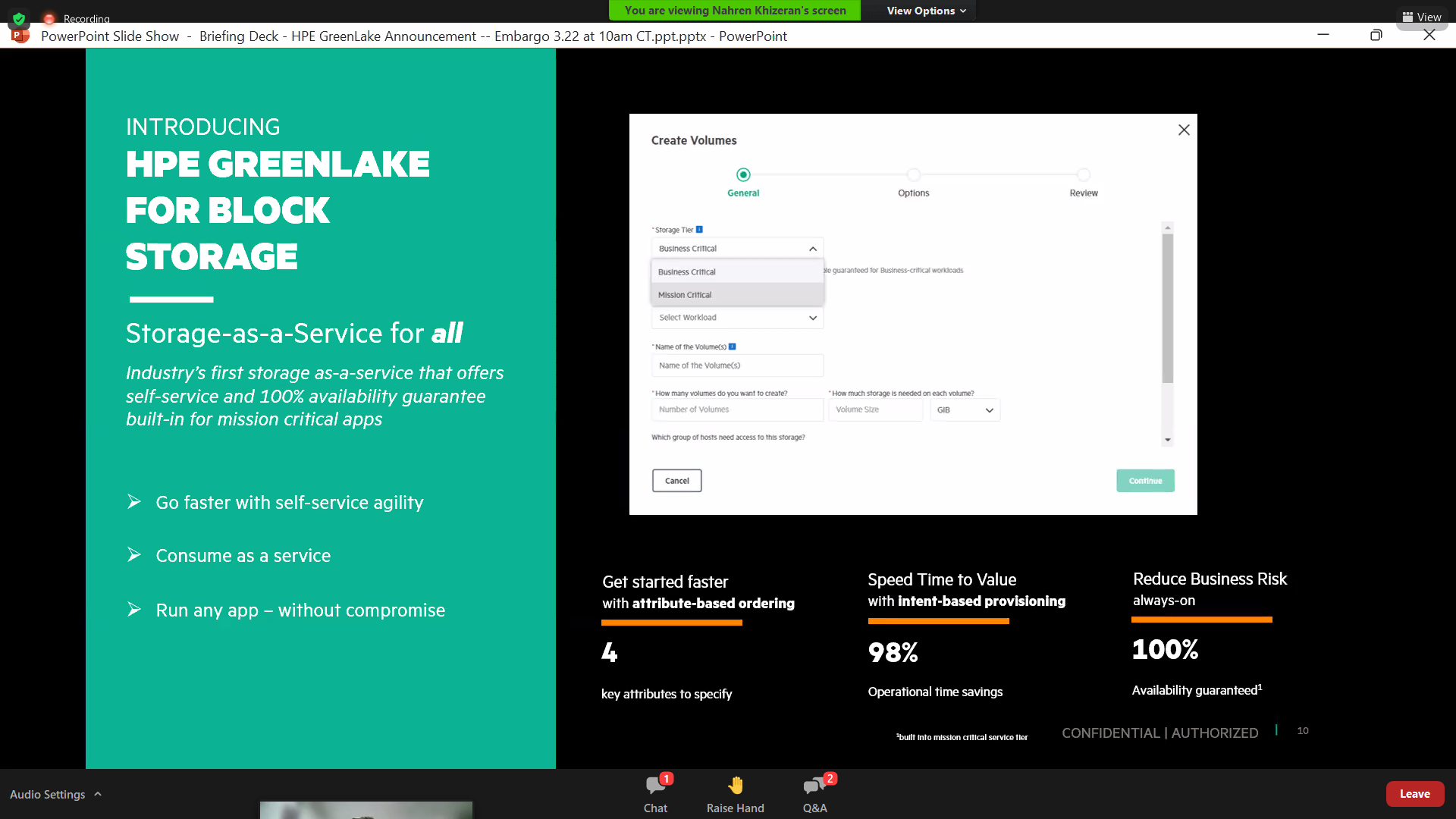
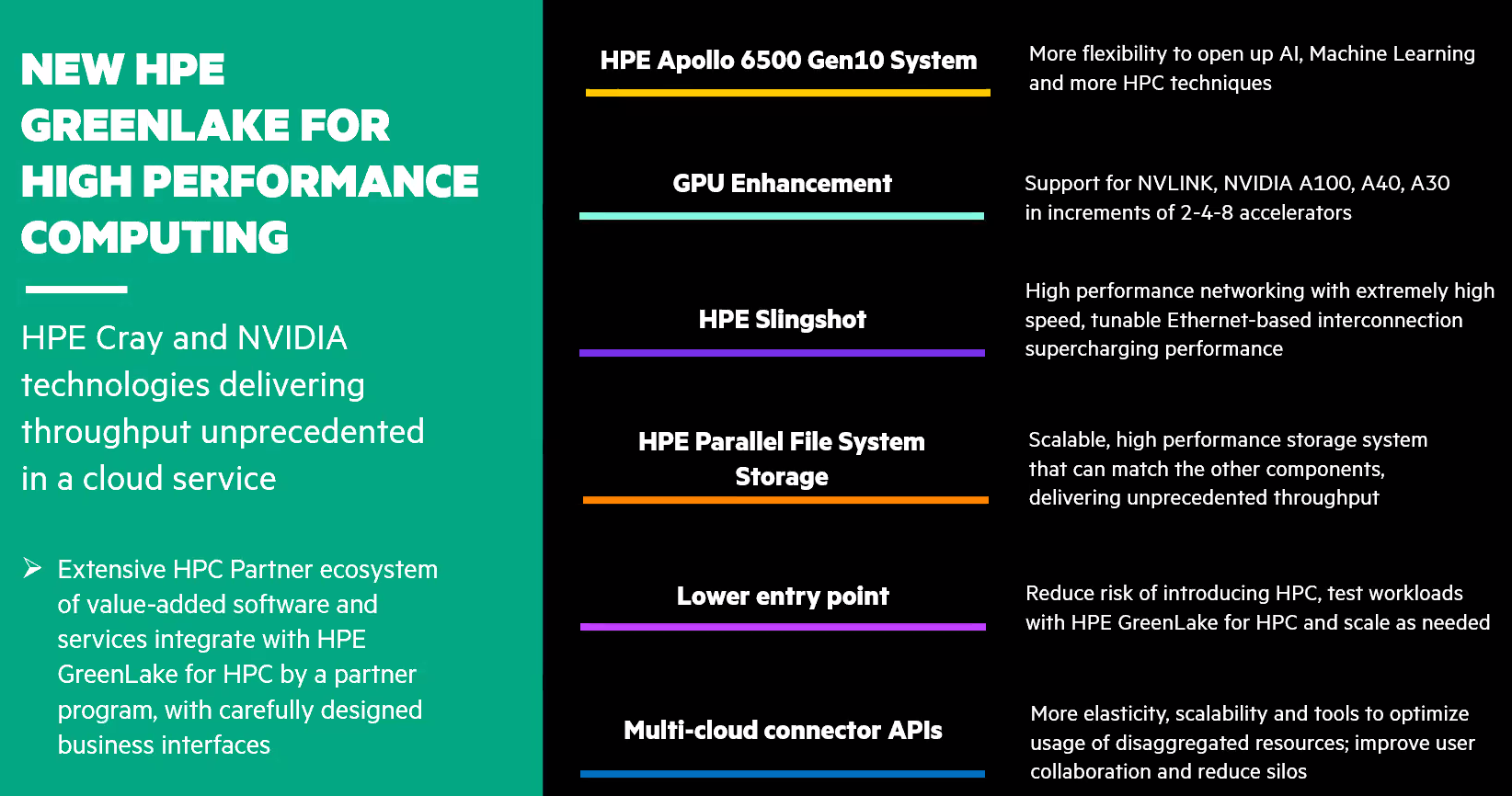


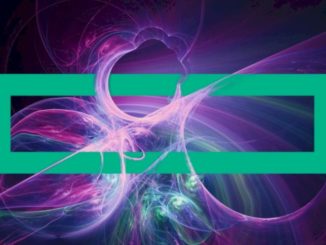
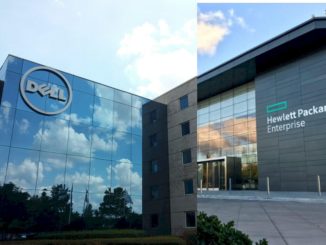
Be the first to comment